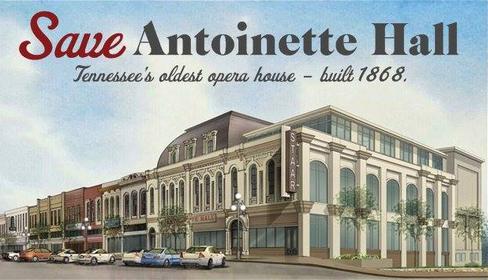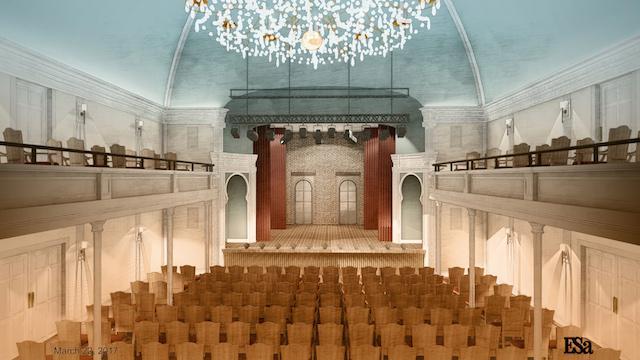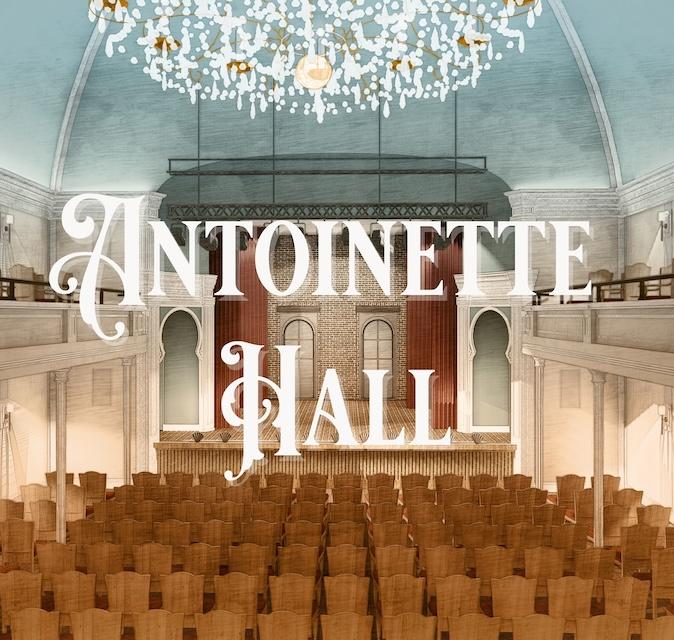Antoinette Hall
Tennessee's Oldest Surviving Opera HouseHelp Save the 1868 Antoinette Hall Opera House
Antoinette Hall Opera House was built during the summer and fall of 1868 on the southeast corner of the Pulaski Public Square following a fire that destroyed most of Pulaski’s east side. The original owner of the Opry House, Angenol Cox, named the performance hall in honor of his wife, Antoinette. The Opera House opened on Christmas of 1868 and offered a venue for traveling entertainment, local productions, lectures, graduations and many other events over a 50-year period.
The two-story Second Empire building is owned by STAAR, a 501c3 nonprofit. The Antoinette Hall Preservation Society, a STAAR companion organization, has launched a major fundraising effort, which supports an extensive stabilization and restoration project.
The vision…
Restoration of Antoinette Hall will create a destination space where intimate theatrical performances may be held as well as concerts, opera, dance, speakers, ceremonies and more.
The renovated Antoinette Hall Opera House will seat approximately 350 with a horseshoe balcony, fly system for sets and state-of-the-art amenities servicing larger local and traveling productions and events.
The education floor on the street level, where events are currently hosted by STAAR Theatre, will house classrooms for instruction in music/orchestra, vocal/choral, visual arts and dance. It will also feature a modern recording studio, an art gallery and a museum.
The entire facility will be available to serve as an event center for classes, conferences, seminars, book signings, weddings, receptions, parties, graduations, recitals, art exhibits and theatrical productions.

The architect’s rendering shows what Antoinette Hall and the STAAR Center for the Arts will look like when completed.

At it stands today Antoinette Hall’s beautiful exterior architecture was removed in the late 1900s. Donations and other funding are being sought to restore the building’s ornate facade.
STAAR Theatre is located on the ground floor of Antoinette Hall. Click here for performance schedules and ticketing.
Donations in support of Antoinette Hall’s preservation, restoration and reuse as a regional arts center are tax deductible through STAAR’s 501c3.

Antoinette Hall when the Opry House was still being used as a cultural center in the early 1900s was accessed via arched entrances on either side of the street level storefronts.
Click Here Join Our Mailing List


The Performance Hall
Antoinette Hall Opera House’s Mansard roof once enclosed an ornate performance hall replete with lavish wall coverings and fixtures that offered perfect acoustics for patrons seated in the balcony or on the main floor.
When restoration is complete, Antoinette Hall will become a multipurpose community arts center available to arts, musical, theatrical, historic and other types of groups that will enhance community cultural life and stimulate the economy of the region.

Beginning in the 1930s Antoinette Hall was all but forgotten, though below it the Pulaski square was a thriving commercial district. What had once been two separate store fronts on the ground level was redesigned to house Kuhn’s 5¢-10¢-25¢. In addition to selling clothing and household items, the variety store had a diner in the back, a candy counter in the front and a staircase leading to a basement filled with toys.
Antoinette Hall is a contributing structure to the Pulaski Courthouse Square Historic District, which was placed on the National Register of Historic Places by the United States Department of the Interior in 1985.


